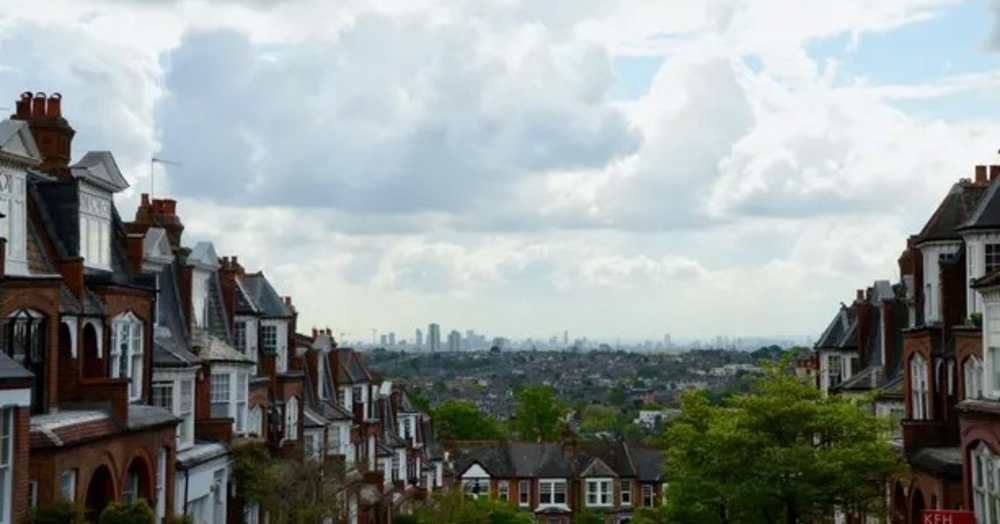
UK mortgage rate crisis driving record rent squeeze as landlords pass higher costs on to tenants
Homelessness charity says hundreds of thousands of people could be left unable to cover their rent and at risk of losing homes
Millions of renters across the UK are being squeezed by landlords passing on higher mortgage costs to their tenants, contributing to record rent increases amid the cost of living crisis.
Property experts and charities warned the rapid rise in borrowing costs set by the Bank of England – which this week increased rates to 5% – was having a far broader impact than on owner-occupiers’ mortgage costs, with potential to trigger a wider crisis in affordable housing.
Matt Downie, the chief executive of the homelessness charity Crisis, said hundreds of thousands of people could be left unable to cover their rent and at risk of losing their homes. “As mortgage costs increase, we are seeing these costs passed on to tenants and, at a time when energy bills and food costs are so high, the pressures on renters are unsustainable.
“Low income renters face a catastrophe – they can’t rely on housing benefit as it’s been frozen since March 2020 and is completely inadequate. There isn’t nearly enough social housing to go round and over a million households are on waiting lists for the few genuinely affordable homes we do have.”
Official figures this week showed private rental costs rose at an annual rate of 5% in April – the sharpest pace on records dating back to January 2016, while rents outside of London surged at the fastest rate on records dating back to 2006.
It comes as growing numbers of landlords put up rents in response to their own rising costs, while those unable to increase rents are selling their properties – often pushing tenants to move. Figures from Citizens Advice show the number of people seeking help with no-fault evictions has more than quadrupled since 2019 to record levels.
In a week of alarm over Britain’s ticking mortgage timebomb, MPs have focused on the impact for millions of people facing a dramatic surge in their mortgage costs. However, there are almost 2m more households living in rented homes than those with a mortgage – about 9.2 million renters vs 7.4 million mortgage-holders. Official figures show less than a third of households in England and Wales own with a mortgage. A fifth rent privately, while 17% live in social rented accommodation. About a third – the largest group – own outright.
More than half of landlords in England have a buy-to-let mortgage. Figures from UK Finance show about 2m are outstanding, with about 230,000 due to exit cheaper fixed-rate deals between March 2023 and March 2024.
The Institute for Fiscal Studies warned that interest rates hitting landlords’ borrowing costs were part of the reason for a large increase in rents. Renters had also typically paid 24% more than mortgagors on average pre-pandemic.
“Those now paying higher rates in the mortgage market are experiencing what private renters have been experiencing for years now, with almost zero interest from politicians for addressing affordability crisis in private renting,” said Darren Baxter-Clow, a policy adviser at the Joseph Rowntree Foundation poverty charity.“The debate needs to be broader in housing market. The rental side is where some of the real pressures will be.”
However, Torsten Bell, the chief executive of the Resolution Foundation, said it was “almost entirely nonsense” that higher mortgage costs for buy-to-let landlords were driving up rents.
Rents are determined by wages and supply and demand for housing, he wrote on Twitter, adding: “Of course higher buy-to-let mortgage bills may make landlords want to raise rents. But that’s different to why they are able to do so – which is rising wages.”
The Bank of England estimated in December that landlords would need to increase rental incomes by about 20% to offset the rise in buy-to-let mortgage costs expected at that time. “This would increase the cost of housing for renters, which may affect their resilience,” it warned. “This might lead them to default on unsecured credit, or cut consumption sharply, which could amplify the economic downturn.”
Highlighting how some landlords are exiting the market amid difficulty passing on higher costs to tenants, figures from the Royal Institution of Chartered Surveyors this month show almost two-thirds of surveyors have witnessed rising numbers of buy-to-let landlords looking to sell their properties.
Estate agents also argue costs linked to government legislation are leading landlords to sell, including greater protections for tenants in Michael Gove’s renters’ reform bill and new energy efficiency regulations. The measures come as almost a quarter of private rentals fail to meet decent home standards.
However, shortages of private rented homes, and a lack of available social housing, are expected to drive rents up further. Lucian Cook, head of UK residential research at Savills, said: “Some buy-to-let landlords will be saying it’s just much more difficult [to keep owning a property], leaving private renters chasing limited supply.”
Polly Neate, the chief executive of the housing charity Shelter, said a big chunk of landlords also did not have a mortgage, meaning many were making a considerable profit as rents accelerate. “The increased demand for private rentals driven by years of government failure to invest in genuinely affordable social homes is a major reason why rents are so high and climbing higher. And it is tenants who are feeling the pain of the cost of living crisis more than most.”